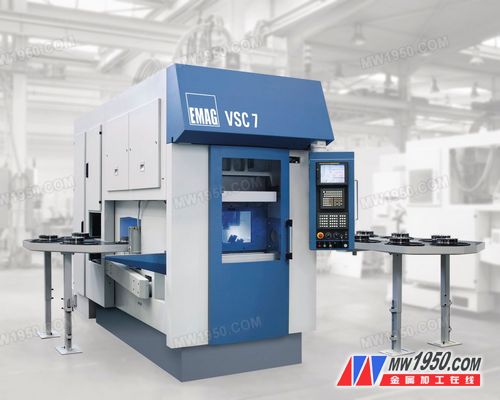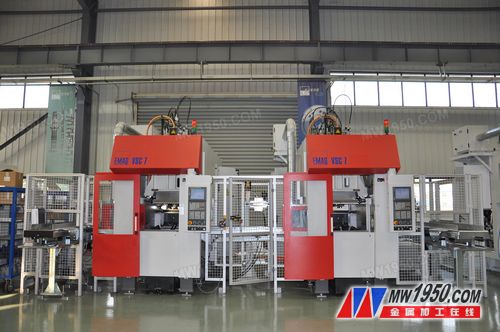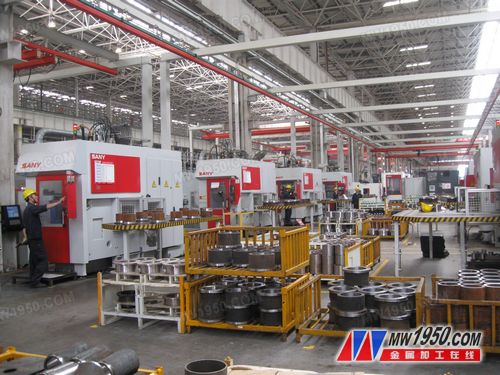·The production efficiency has increased by 6 times, making the work a sense of accomplishment
·Complete loading and unloading system greatly reduces labor intensity, even if the workpiece weighs 60 kg
·Reliable and flexible production solutions meet the future development needs of Sany
Sany Group (SANY) is the largest construction machinery manufacturer in China and the sixth largest in the world. In recent years, Sany Group has been awarded “Top 500 Chinese Enterprises†and “The Most Effective and Competitive Enterprise in Construction Machinery Industryâ€. Its flagship concrete pump truck has the world advanced level and has completely replaced imported and domestic market. The market share is as high as 57%, and the number of production and sales for the first time in many years ranks first in the world. The Sany Heavy Industry Pumping Division, which is responsible for the production of concrete pump trucks, has always been the core and most important enterprise of Sany Group. They have very high requirements for technological innovation, production quality and processing efficiency.
The bearing housing is an important rotating part of the concrete pump truck that is filled with the suspension part of the pump body suspension, weighing 60 kg, but the processing of it has always been the production bottleneck of Sany. According to the metal processing online reporter, the processing equipment used in the Sany pumping processing workshop is a simple CNC lathe equipped with an ordinary three-jaw chuck. The operator not only needs to manually put the workpiece into the machine tool, but also needs to spend a lot of time after playing. The table can only be processed after the workpiece is found. Under normal circumstances, a simple CNC lathe can only process up to 7~8 workpieces per day. Moreover, during the processing, the operator also needs to constantly use iron hooks to hook out a large amount of iron filings around the parts. In this way, not only the processing efficiency is low, the scrap rate is high, and the labor intensity of the operator is also very large. Most of the main operators in the workshop are young people after the 80s. This unsuccessful and hard work position can not bear many people, resulting in very fluid employees. The production leaders and senior management of Sany are bothered by this, and they urgently need a solution that can greatly improve the production efficiency of the products and reduce the labor intensity. When EMAG demonstrated its advanced solutions for inverted vehicles and successful application experience around the world, the head of Sany Pumps decided to adopt it.
In response to the characteristics of the workpiece and the actual situation, EMAG has proposed a customized solution for the customer. The standard vertical lathe EMAG VSC7 turning center for machining larger discs divides the machining process into two processes, including 11 minutes for the first process and 12 minutes for the second process, plus all auxiliary time. Each inverted lathe can complete at least 48~50 workpieces per day, which is equivalent to the total output of the original 6 sets of simple CNC lathes in three consecutive shifts. And in terms of the number of people, it is equivalent to two people who have completed the workload of the previous 18 people. The unique design structure of the EMAG inverted lathe makes its production area only 1/3 of the original, and the consumption of production materials such as water and electricity is greatly reduced.
In addition, the EMAG VSC7 turning center unifies the complete loading and unloading system, composite machining function and complete measuring system in one machine tool, which ensures the processing precision and greatly reduces the labor intensity of the operators. The staff applied to the leader to ask for work on the inverted car. Finally, Sany Pumps conducted a technical assessment of “competition on duty†in the workshop. The two most prominent employees finally got the opportunity to operate the two EMAG VSC7 turning centers. The production task of the key part of the bearing housing was easily completed on time, and the management of Sany Pumps also remembered the name EMAG.
Beginning in the second half of 2009, along with the national economic stimulus, the construction industry in the country showed a blowout trend, and Sany Pumping also began to significantly increase production output. The reliability of the EMAG inverted vehicle was demonstrated, and no other equipment appeared. The failure rate has also increased significantly due to a large increase in production. By the beginning of 2010, the production of Sany Pumping needs to be further improved. The management of Sany Group decided to build a production workshop (No. 18 model factory) that reflects the advanced and flexible manufacturing level of Sany Group. There is no dispute, EMAG inverted The car was unanimously proposed by the Group's technical department and production department to purchase 8 sets of key components for the production of more concrete pump trucks at one time. Together with the two inverted vehicles that were previously purchased, they presented a large-scale display array consisting of 10 EMAG inverted vehicles in the modern No. 18 plant, which continuously produced high-quality workpieces for the Sany pump. There must be a technical assessment of “competition on duty†in the workshop!

The EMAG VSC7 turning center unifies the complete loading and unloading system, compound machining function and complete measuring system on one machine, which greatly reduces the labor intensity of the operator while ensuring the machining accuracy.

EMAG offers customized VSC7 machines based on the requirements of the Sany Group and integrates extensive application experience into the solution.

Sany Group painted 10 EMAG VSC7 on SANY's LOGO, but the group is very "enjoyed" by EMAG to bring them efficiency and ease.
Innovative inkjet printing technology also brought great vitality of ceramic tiles,Thin Porcelain Tiles patterns more and more colorful. At the show, regardless of the stone, wood effect of the tiles, or geometry, large ceramic plate specifications, without exception, are up and down in the surface texture of the bump mold up and down enough, and jumped out of the past limited to stone or wood Natural attributes, into many designers and technicians ideas.Thin Digital Tiles.
The company has developed a successful application of inkjet printed tiles equipment with seepage glaze, the color infiltration into the blank 0.5 ~ 0.6mm, if the polishing depth of 0.15mm, leaving the pattern is still clear to see the booth gray black and white seepage stone imitation The effect of the 1000x3000mm polishing plate, no less than cast glaze effect, if combined with fine powder, particle cloth technology, the effect will be better! This may be the future direction of development of polished tiles and polished sheets.
Inkjet technology combined with spray glaze process, the decorative ceramic sheet to further enhance, still based on large-size products, product thickness between 3-6mm. A variety of wood, stone-like inkjet, polishing, semi-polishing, full cast glaze, matt ceramic sheet products. In the product design, the ceramic sheet is not weaker than the traditional ceramic tile.
At present, the marketing of sheet metal is still dominated by engineering channels. Real estate, subways, hospitals, high-rise buildings and other public works are the key sales areas of Thin Ceramic Tiles, Practice has proved that up to 100 meters high-rise, the use of ceramic wall tiles for paving, is safe and feasible, the material costs, construction costs, transportation costs, and ceramic curtain wall hanging compared to substantially reduce the cost of more than 50%. Therefore, in terms of engineering channels, instead of the traditional curtain wall hanging system, is one of the important applications of ceramic sheet. At present, the ceramic sheet has begun to be used in large-scale applications in high-rise plug-in systems, a lot of engineering projects.
For the northern market, we also introduced the construction material system for Digital Printed Tiles plus thermal insulation materials. Compared with the traditional dry hanging products, ceramic plates not only lower the cost, but also more convenient paving, no steel skeleton, the number of workers reduced from two to one person. A building, originally with 100 tons of ceramic products on the wall, the selection of sheets, only 30 tons, construction costs have also been significantly reduced. "
Thin Digital Tiles
Thin Digital Tiles,Inkjet Tiles,Bathroom Thin Digital Tiles,Porcelain Thin Digital Tiles
UMS New Materials Industry Co.LTD , http://www.ums-factory.com